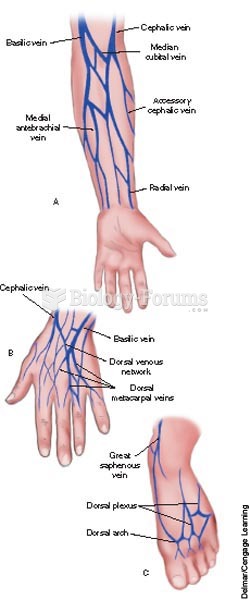Answer to Question 1
Correct Answer: 1
Rationale 1: Ativan should be administered over a 2- to 4-minute period when given via IV push.
Rationale 2: Rapid IV administration can result in apnea, hypotension, bradycardia, or cardiac arrest.
Rationale 3: The intravenous infusion does not need to be discontinued prior to administering the medication.
Rationale 4: Giving Ativan over 30 minutes would not benefit the client who needs immediate treatment for status epilepticus.
Global Rationale: Ativan should be administered over a 2- to 4-minute period when given via IV push. Rapid IV administration can result in apnea, hypotension, bradycardia, or cardiac arrest. The intravenous infusion does not need to be discontinued prior to administering the medication. Giving Ativan over 30 minutes would not benefit the client who needs immediate treatment for status epilepticus.
Answer to Question 2
Correct Answer: 3,4,5
Rationale 1: Diphenhydramine (Benadryl) can be obtained over the counter and does not need a prescription to obtain. It does promote getting to sleep.
Rationale 2: Valerian is an herbal product that does not need a prescription to obtain. It does promote getting to sleep.
Rationale 3: Rozerem is a newer, nonbenzodiazepine hypnotic approved to treat chronic insomnia in people who have problems falling asleep.
Rationale 4: Benzodiazepines are drugs of choice for generalized anxiety disorder and the short-term therapy of insomnia. Flurazepam (Dalmane) should be taken at bedtime because it quickly produces significant drowsiness.
Rationale 5: Ambien is a sedativehypnotic approved for short-term treatment of insomnia.
Global Rationale: Rozerem is a newer, nonbenzodiazepine hypnotic approved to treat chronic insomnia in people who have problems falling asleep. Benzodiazepines are drugs of choice for generalized anxiety disorder and the short-term therapy of insomnia. Flurazepam (Dalmane) should be taken at bedtime because it quickly produces significant drowsiness. Ambien is a sedativehypnotic approved for short-term treatment of insomnia. Diphenhydramine (Benadryl) can be obtained over the counter and does not need a prescription to obtain. It does promote getting to sleep. Valerian is an herbal product that does not need a prescription to obtain. It does promote getting to sleep.







